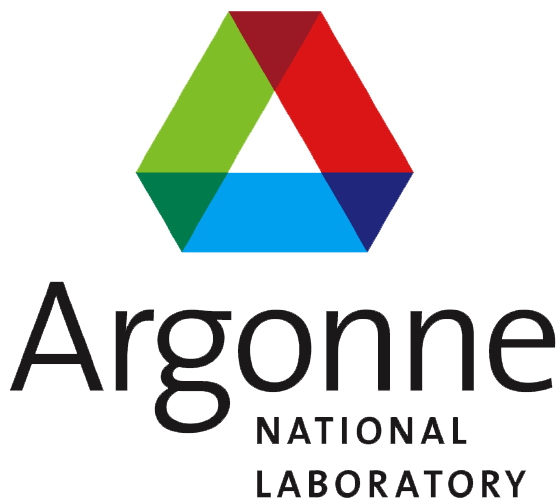Understanding Archetypes¶
Concept: Archetypes¶
One of the principal features of Cyclus is the ability for users to easily switch between different models of fuel cycle facilities. Models may differ in the way they choose to represent the physics of the facility, or in the way they choose for the facility to interact with other facilities, or both. In Cyclus, we call each of these different models an archetype.
Archetype Example¶
The easiest way for most fuel cycle analysts to understand the difference between archetypes is through the example of a reactor model.
The simplest possible reactor archetype uses the concept of fixed input and output recipes to define the transmutation of material. Such a reactor might assume that all material that it receives matches its desired input recipe, and that all the material that it then ships as used fuel will match its prescribed output recipe. This will probably run the fastest.
A more sophisticated reactor archetype uses some form of tabulated data to determine both performance characteristics and used fuel discharge composition. It could be as simple as interpolating between a set of possible input recipes and then using that interpolation on a set of corresponding output recipes. A more complex version of such an archetype could even have tabulated reactor physics parameters for more fidelity.
The most sophisticated reactor archetype may actually be a wrapper for fuel depletion software, and perform a full depletion calculation each time new fuel arrives at the reactor. This will probably take the most computer time to complete.
Assuming that such archetypes are available, the user is welcome to choose which archetype to use, based on the modeling fidelity they are interested in and/or the performance requirements they have for their simulations.
Cycamore: The Cyclus Additional Module Repository¶
The Cyclus team has developed a simple standard set of archetypes to support basic fuel cycle modeling situations. In most cases they implement very simple models and are useful for tutorials such as this, and as a standard way to model facilities that may be at the peripheral of a problem. The Cycamore facility archetypes are:
Source: Source is a generic source of material may fill the role of any facility that produces fresh material. Depending on how much of the fuel cycle a user wants to model explicitly, this could fill the role of a uranium mine, an enrichment facility, a fuel fabrication facility, import of a commodity from outside simulated facilities, etc. The Source facility produces resources at a user-specified rate and may be limited to a user-specified total inventory.
Enrichment: Enrichment is a facility archetype that implements the standard equations for enrichment of U-235 in U-238, with a constrained total enrichment capacity.
Reactor: Reactor is a facility archetype which uses fresh and spent fuel recipes to model fuel transmutation. Fuel is modeled as batches and assemblies that are reloaded at regular intervals.
Separations: Separations is a facility archetype that receives one or more material streams and separates all the isotopes into a number of output streams.
FuelFab: FuelFab is a facility archetype that mixes streams of fissile and fissionable material in order to best approximate a given recipe using the d-factor approach.
Sink: Sink is a generic sink of material that may fill the role of any facility that permanently holds used nuclear material. Depending on how much of the fuel cycle a user wants to model explicitly, this could fill the role of a geologic repository, an interim storage facility, export of a commodity to outside simulated facilities, etc.
Activity: Discover the Available Archetypes¶
If using Cyclus on your machine, the archetypes available to you are only those that you have downloaded.
To check which archetypes are downloaded on your machine run the command cyclus -a from your terminal.
If you are not running Cyclus on your machine, the archetypes available to you include those in Cycamore, which can be found on the archetypes webpage.
What archetypes can you see yourself using in your research?
Concept: Third-Party Archetypes¶
Third-Party Archetypes complement the initial archetypes available in Cycamore and are not necessarily maintained by the Cyclus core development team. Popular Third-Party Archetypes are:
Bright-lite
Cyborg
Mbmore Archetypes
rwc Archetypes
Review the archetype developer tutorial for more information on making your own Archetypes.
Activity: Adding archetypes¶
After discovering which archetypes are available, we will select which subset of archetypes to use in this particular scenario.
The archetypes we will use in our simulation include:
cycamore Source: to act as the minecycamore Enrichment:to act as the enrichment facilitycycamore Reactor: to act as the LWRcycamore Sink: to act as the geological repository.
A user identifies the simulation archetypes in the archetype block of the Cyclus input file.
The archetype block is located after the simulation control block and takes the form:
<archetypes>
<spec>
<lib>lib1</lib>
<name>arch_1</name>
</spec>
<spec>
<lib>lib2</lib>
<name>arch_2</name>
</spec>
</archetypes>
where lib is the library in which the archetype came from and name is
the archetype name. Let’s build our archetypes!
Using the template below and the table below,
fill in the template with the variables listed in the table below.
Variable |
Value |
Purpose |
|---|---|---|
|
|
Library of the archetype |
|
|
Name of archetype |
|
|
Library of the archetype |
|
|
Name of archetype |
|
|
Library of the archetype |
|
|
Name of archetype |
|
|
Library of the archetype |
|
|
Name of archetype |
Archetype Block Template¶
<archetypes>
<spec>
<lib>lib1</lib>
<name>arch1</name>
</spec>
<spec>
<lib>lib2</lib>
<name>arch2</name>
</spec>
<spec>
<lib>lib3</lib>
<name>arch3</name>
</spec>
<spec>
<lib>lib4</lib>
<name>arch4</name>
</spec>
</archetypes>
Once complete, your archetypes block should look like:
<archetypes>
<spec>
<lib>cycamore</lib>
<name>Enrichment</name>
</spec>
<spec>
<lib>cycamore</lib>
<name>Reactor</name>
</spec>
<spec>
<lib>cycamore</lib>
<name>Source</name>
</spec>
<spec>
<lib>cycamore</lib>
<name>Sink</name>
</spec>
</archetypes>
Once complete, append the archetypes section under the control section of input file [1].
Footnotes





